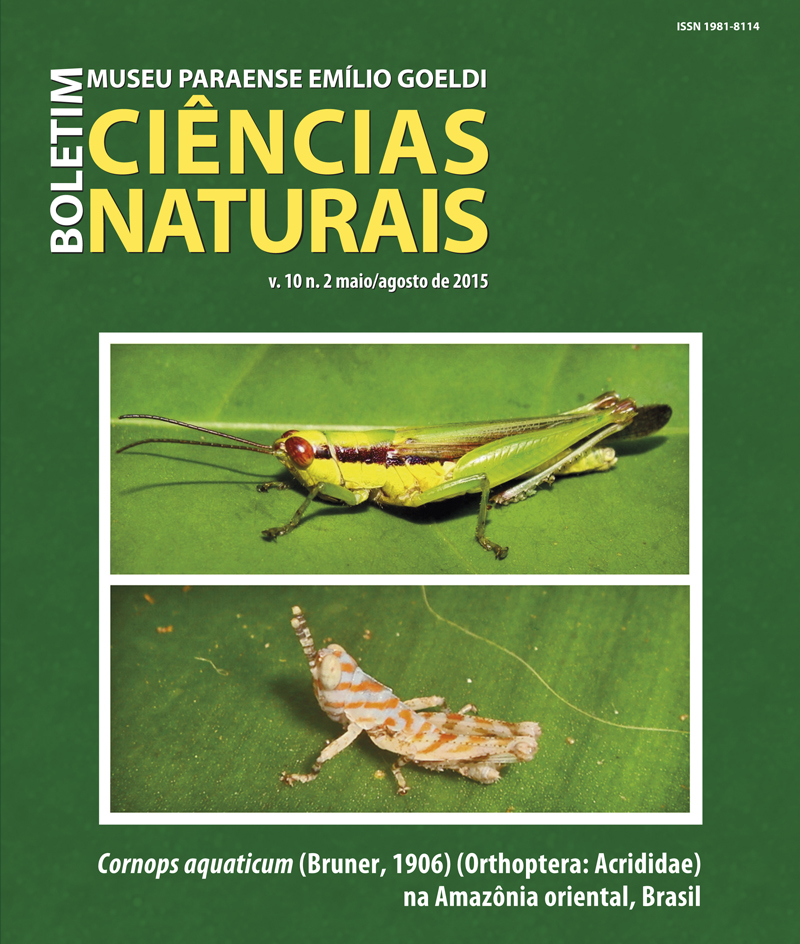Food acceptability of Cornops aquaticum (Bruner, 1906) (Orthoptera: Acrididae) in the Eastern Amazon, Brazil
DOI:
https://doi.org/10.46357/bcnaturais.v10i2.486Keywords:
Semiaquatic grasshopper, Acceptance feeding, Aquatic macrophytesAbstract
Cornops aquaticum is a neotropical predominantly green grasshopper, semiaquatic, coloring, living associated with the macrophytes of Pontederiaceae family, found in Amazonian bodies of water, specifically the genus Eichhornia. The State Park Utinga (PEUt), Belém, Pará, has suffered constant infestations of weeds, especially E. crassipes in its Bolonha and Água Preta lakes, which supply water to the city of Belém. This work aimed to make food acceptability tests with the grasshopper C. aquaticum. For this, 12 macrophytes (more abundant in PEUt) as a food source for 240 and 240 immature adults (nymphs) separately in 250 ml beakers were offered for a period of 21 days, with one repetition. Among the 12 species tested C. aquaticum showed acceptance (positive acceptability) for the species E. crassipes, Nothoscordum sp. and Pistia stratiotes. The higher survival of adult and immature (nymphs) of grasshopper accepted among the three plants was observed for E. crassipes. During the experiment the higher mortality of C. aquaticum occurred in macrophytes Hymenachne amplexicaulis, Nymphoides indica and Nymphaea ampla indicating that these plants, which were consumed, are the most harmful to the grasshopper.
Downloads
Published
Issue
Section
License
Publication means fully assigning and transferring all copyrights of the manuscript to the journal. The Liability Statement and
Assignment of Copyrights will be enclosed with the notice of acceptance. All the authors must sign the document and return it to the journal.






